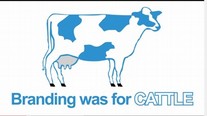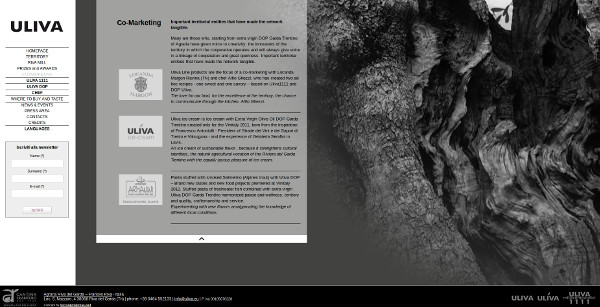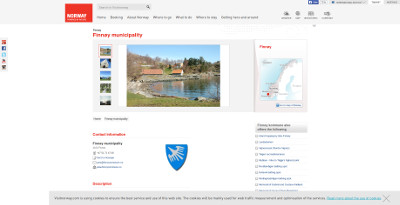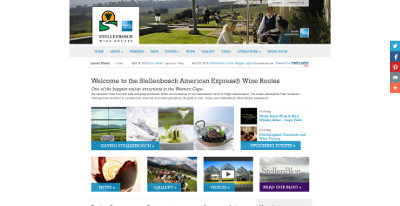Overview: so what is brand?

Let’s start by watching a video that shows how brands are everywhere in our lives,
what they stand for, etc.
A Brand is not just a logo, a corporate identity, advertising… it is confidence, passion, belonging, security and a set of unique value. Brands guarantee quality, evoke desire, help us belong…
A Brand is more than your business logo, tagline, or your marketing campaign
A Brand is a:
- Connection between you and your customers
- What consumers know and believe and think and feel about your business, its products, services, and the experience you provide
- What you stand for and your reputation
- Your company’s face in the marketplace
- The emotional impact your company makes on your customers or potential customers
- Your way of differentiating yourself within the marketplace
- Your promise
Ask yourself
Meg Whitman
Hewlett Packard AD

Building your brand
You don’t have to be a big business to have a brand. Here are some brand building tips for small business and what you want the world to know about it, then polish your vision and make it crystal clear:
WHO ARE YOU?
List the value that your Farm stands by. Do people know about your business values? Have you created a relationship you can foster? Have you made a connection or bond with your customer?
WHAT ARE YOUR STRENGTHS?
What value or benefit does your product or service bring to the customer? Do you have speciality products or services that put you ahead of the market? Can you show through pictures or description the emotional factor or why you are better?
WHAT HAVE YOU DONE?
This is a chance to tell your story and talk about less visible activities such as employee training related to your brand, community involvement, and charitable contributions. These are important to describe because they can help you make connection to the value system of your customer.
Watch this:
tips about building a brand strategy...

Branding Rural Areas: Motives, Measures and Management
Now let's try to understand why linking a brand to a rural area can be a winning marketing strategy:
Rural branding has much in common with place branding. Place branding is used as an umbrella concept which focuses not only on regions, but can include whole nations, cross-border regions, cities, rural areas and so on. Rural branding, as the term already implies, addresses specific rural places and therefore focuses on less populated areas with specific demographic, social and economic developments. While place branding of cities and regions has been commonplace for several decades, the branding of rural areas and communities is a much more recent phenomenon. A rural brand is a tool of territorial marketing, which is a value creating process. The Brand is the element of synthesis of the meanings attributed to the rural area.
Local governments and community representatives find it necessary to mimic the communication and promotion campaigns of larger places in order to raise positive attention, both internally in the community and externally to the outside world. Rural actors often see branding as a means to counteract negative social demographic and economic developments. Branding is, along with other measures, considered an integrated means to keep rural areas viable and alive.
Place marketing and Place branding
Rural areas have good reason to choose branding as one of their instruments to turn around some of the developments described earlier. Generally, the purpose of branding is to improve the overall perception and to increase professional exposure of the qualities and opportunities in rural areas. Place branding serves as a common denominator between separate pillars, for example economy, infrastructure, education and culture, and arenas (citizens, entrepreneurs, authorities) that make up an area. Thus, branding comprises and attempts to bring together different sectors and perspectives to align their goals.
Obtaining an effective brand will put the area on the map, and many nations, regions and cities have either already established their place brand, or are working on it, or have at least given it some thought. Some place brands are directed at one specific sector, for instance tourism, while others cover several sectors and try to influence a variety of place consumers, such as tourists, the business community, investors, potential new residents and the locals themselves.
The specificity of rural areas
Place branding has a high level of intangibility and complexity and ruralities are marked by “uncertain, complex and often contradictory modes of decision making, swayed by multiple interest groups, each with its own distinctive set of values and ideologies” (Holmes, 2002).
Local communities distrust new initiatives about place branding, especially in rural areas where problems arise when one group looks only at its own objectives without taking account the need for compromise or the multiple use of rural areas” (Pevetz 1980). During the last 10 years many European regions and provinces have tried to pursue creative strategies to promote the qualities of their territories (Hospers 2004) in the broadest sense, trying to leverage: landscape, nature, cultural heritage, regional products, regional gastronomy and traditional quality products, among others. Success of an umbrella brand in the marketplace is gained only if actors “build an identity or brand image that sums up for potential visitors the essence of the physical qualities, landscape, people, culture, quality, and vibrancy of the area” (Garrod et al. 2006).
Territorial marketing can be considered a co-marketing strategy?
Territorial marketing actions
- create relationships with local authorities for initiatives in favour of the territory
- create a communications campaign highlighting the territoriality of the product
- tell its typicality and characteristics
- develop a network between producers of the same area to support each other
The case of PESTO GENOVESE
The Pesto Genovese guarantees a return , as well as for the producers of Basil of Pra, for restaurant owners, processors and therefore , is a "resource " for the important economic power of the Genoa district.

Good Examples of Territorial Co-Marketing Promotions and Umbrella Brand
Case study:The Sud Tirol
The Meetjesland (Belgium)
The Finnoy Municipality (Norway)
Some BRANDS identifying the Wine Routes all over the World: in collaboration with local institutions producers, have succeeded in enhancing the area and production
South Africa
Cyprus
USA
Italy
France

This communication (website) reflects the views only of the author, and the Commission cannot be held responsible for any use which may be made of the information contained therein.











